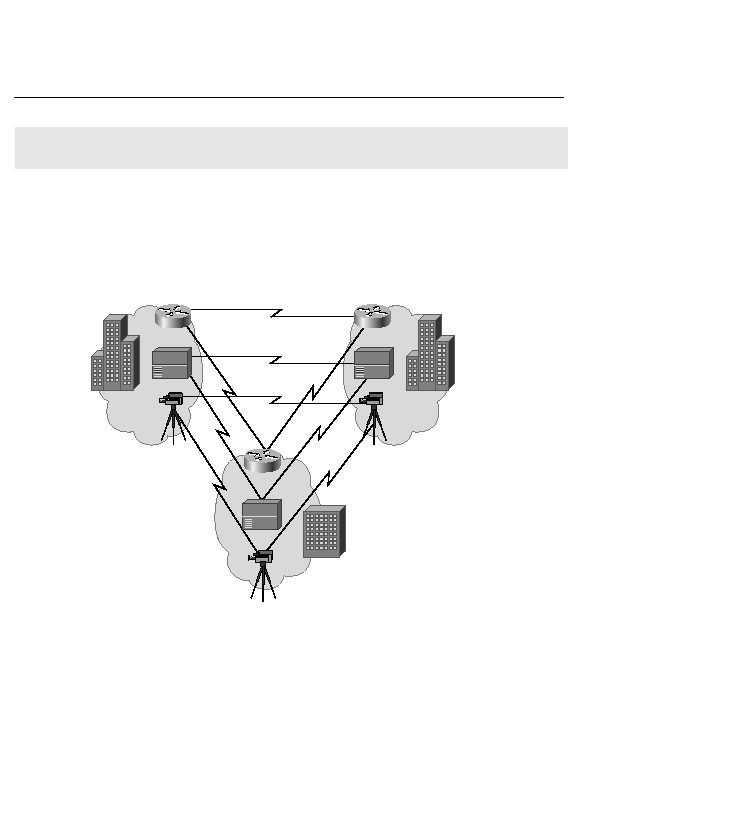
telecommunications division managed the voice network, and the LAN-support division
supported the data operations. Businesses and enterprises that supported voice and data had to
bear the two separate expenses of a voice infrastructure and a data infrastructure. Figure 16-2
shows an example of separate voice, video, and data networks.
design has emerged as a way to save expenses. Voice over data allows the consolidation of the
costs of administering and maintaining both networks by converging voice and data onto one
network. Using the same infrastructure for voice and data results in significant cost savings.
Savings come from the elimination or reduction of voice-only circuits and services. Savings
come from the costs associated with the administration and maintenance of dual systems. Last,
but not least, the recurring costs of supporting two systems are reduced as well.
strategically important issue for enterprise and public service provider infrastructures alike.